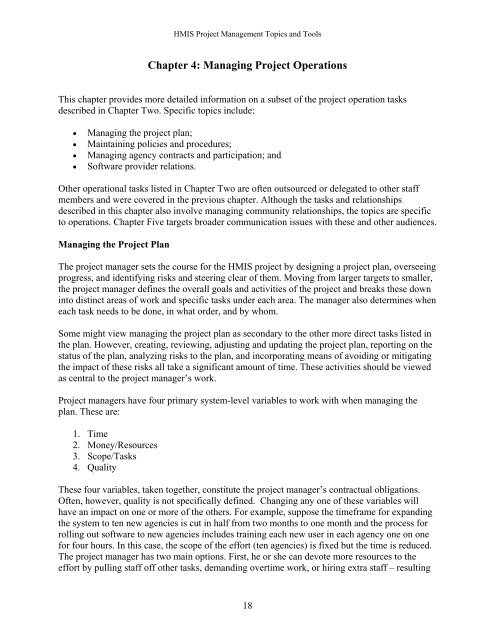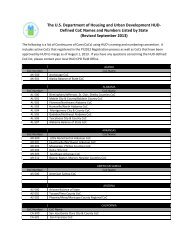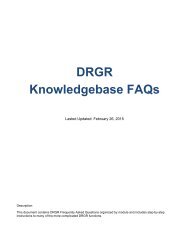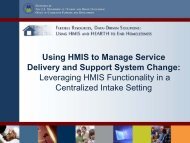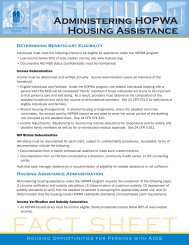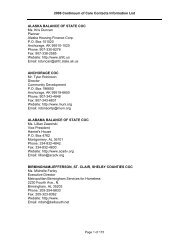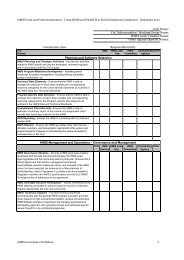HMIS Project Management Topics and Tools - OneCPD
HMIS Project Management Topics and Tools - OneCPD
HMIS Project Management Topics and Tools - OneCPD
- No tags were found...
Create successful ePaper yourself
Turn your PDF publications into a flip-book with our unique Google optimized e-Paper software.
<strong>HMIS</strong> <strong>Project</strong> <strong>Management</strong> <strong>Topics</strong> <strong>and</strong> <strong>Tools</strong>Chapter 4: Managing <strong>Project</strong> OperationsThis chapter provides more detailed information on a subset of the project operation tasksdescribed in Chapter Two. Specific topics include:• Managing the project plan;• Maintaining policies <strong>and</strong> procedures;• Managing agency contracts <strong>and</strong> participation; <strong>and</strong>• Software provider relations.Other operational tasks listed in Chapter Two are often outsourced or delegated to other staffmembers <strong>and</strong> were covered in the previous chapter. Although the tasks <strong>and</strong> relationshipsdescribed in this chapter also involve managing community relationships, the topics are specificto operations. Chapter Five targets broader communication issues with these <strong>and</strong> other audiences.Managing the <strong>Project</strong> PlanThe project manager sets the course for the <strong>HMIS</strong> project by designing a project plan, overseeingprogress, <strong>and</strong> identifying risks <strong>and</strong> steering clear of them. Moving from larger targets to smaller,the project manager defines the overall goals <strong>and</strong> activities of the project <strong>and</strong> breaks these downinto distinct areas of work <strong>and</strong> specific tasks under each area. The manager also determines wheneach task needs to be done, in what order, <strong>and</strong> by whom.Some might view managing the project plan as secondary to the other more direct tasks listed inthe plan. However, creating, reviewing, adjusting <strong>and</strong> updating the project plan, reporting on thestatus of the plan, analyzing risks to the plan, <strong>and</strong> incorporating means of avoiding or mitigatingthe impact of these risks all take a significant amount of time. These activities should be viewedas central to the project manager’s work.<strong>Project</strong> managers have four primary system-level variables to work with when managing theplan. These are:1. Time2. Money/Resources3. Scope/Tasks4. QualityThese four variables, taken together, constitute the project manager’s contractual obligations.Often, however, quality is not specifically defined. Changing any one of these variables willhave an impact on one or more of the others. For example, suppose the timeframe for exp<strong>and</strong>ingthe system to ten new agencies is cut in half from two months to one month <strong>and</strong> the process forrolling out software to new agencies includes training each new user in each agency one on onefor four hours. In this case, the scope of the effort (ten agencies) is fixed but the time is reduced.The project manager has two main options. First, he or she can devote more resources to theeffort by pulling staff off other tasks, dem<strong>and</strong>ing overtime work, or hiring extra staff – resulting18


